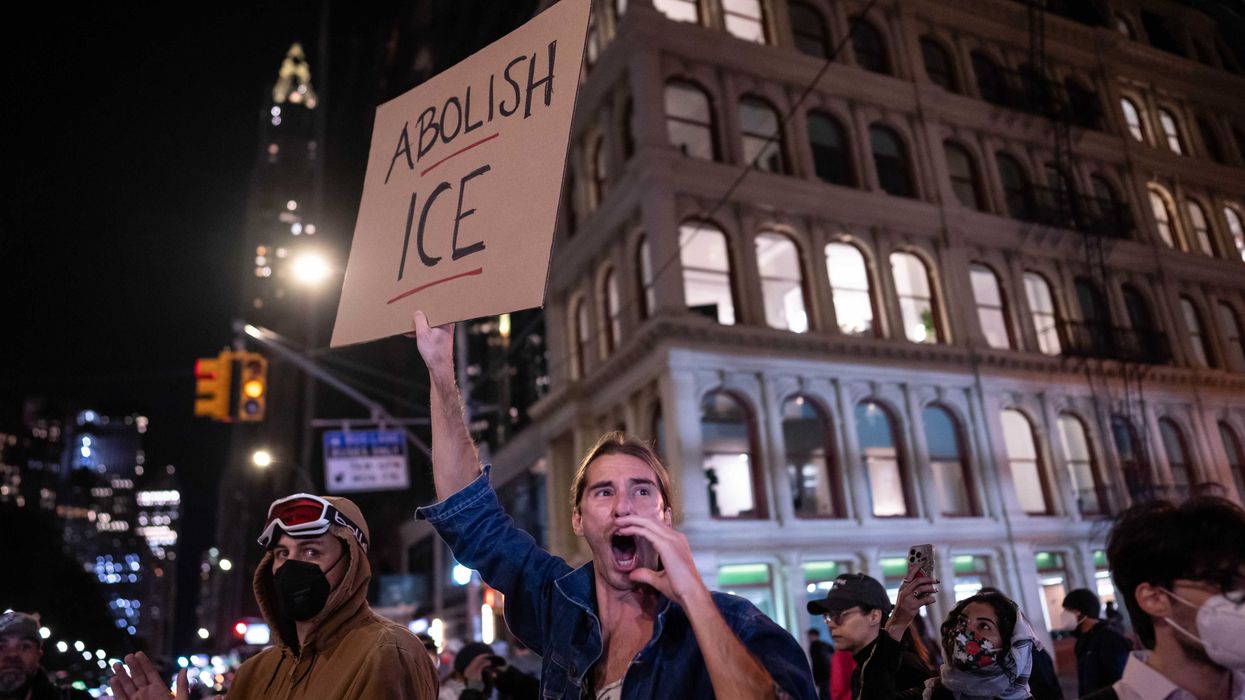DOC: Last November saw another record in American history. It's not necessarily a good record. Well, I mean, it's not a bad one. But when you know the full story, it's not a good situation.
In November, nearly 62 million people received Social Security benefits. That is a record high number in American history. Sixty-two million. There are just -- there is just shy of 330 million Americans. Sixty-two million receiving Social Security benefits.
Well, I say, it's not necessarily a bad thing that people are retired and receiving money. That's fine. But when you know the full system and you realize how it's strained and how unsustainable it is, and still, we have not addressed it. When you realize what a Ponzi scheme Social Security is, you realize that's not a good thing. It's not sustainable. It is a failure. Parts of it are absolutely evil. Yeah, you don't hear many people challenge that because for years, Social Security was kind of a third rail. You just accepted, that people wanted and liked it.
Well, yeah, if you're retired and on Social Security and you hear people challenge the notion of Social Security, you're like, whoa, whoa, defend what I'm getting. I would never suggest pulling the rug out from underneath people. But over the long haul, this is a system that has to be changed. Let me explain why. In addition to the 62 million people receiving Social Security, the Bureau of Labor statistics reported that currently there are 126 million full-time workers in the US. So that is just over two full-time workers for each person receiving Social Security.
The notion of Social Security was sold as, okay. Everybody makes money. And you pay into this pot. And it grows. And it makes interest. And when you retire, that money will be there.
That's not really how it is. As soon as the government saw big money, those DC people that just like to spend, as soon as they saw millions and then billions of dollars and hundreds of billions and into the trillions of money into Social Security, they went and robbed that lock box.
Remember the lock box? We'll put it in a lock box. There's no lock box. They took and spent that money and essentially replaced it with IOUs. Don't worry. We took this money for some stuff. We'll always pay those Social Security benefits. Don't worry.
They commingled the monies. Instead of having an account over here that Social Security money, that everybody pays into and then we pay money out of it, they just essentially put it in one big general fund with all the other monies.
Well, since we have deficits every year and a growing national debt that is now over $20 trillion, they have to pay those out of whatever we take in every month.
And knowing that we have all that debt, on top of this, sets up a pretty bleak future unless we do something. When this was sold to people, it wasn't just you'll pay into it. But they also said how many people would be paying into it, versus how many people are taking money out. And at one point, it was five, six people paying into it, versus people taking out.
That's when those Baby Boomers were all working. Huge percentage of the population paying in, with only a small percent taking out.
Right now, 10,000 Baby Boomers retire every day. Ten thousand every day. So now we're down to two people paying in, for everybody that takes money out. And it's not paying in again to that closed fund. It goes into the general fund. At some point, it will be 1-1. And then 1-2.
And we'll be paying for it. That's unsustainable. That means money that we spend or would spend on other things is going to have to go towards this because of a bad system to begin with, and then mismanagement of a bad system.
The mismanagement being not adjusting for inflation, not adjusting for life expectancy, and retirement ages, and adjusting all of these things. But it was failed to begin with, because you don't get the money. Not in every case.
You could pay in and work hard all your life and then die as you retire. You could die the day after you retire and not collect one penny of all that money you paid into it.
Meanwhile, somebody who has barely worked, done the bare minimum, could retire at -- what is it, 67 now?
Maybe a few years ago, retired at 65, and live to be 130.
More -- taking more years than they ever paid into it with the bare minimum and collect and collect. All of these things are possible. It's a failed system.
If you retire having some sort of retirement account you paid into your whole life and died, that money can go to your whole family. Social Security. No. Not unless they're a minor and you die early and then they can collect up until they're 18.
The number of people that scam the system. The fact that Social Security actually is not a livable wage. Unless you paid off your house or something like that and really made good money where you get the upper level, it's not livable by itself. It doesn't adjust for inflation. Let's stop the insanity of Social Security. No. People that are near retirement or retired, not suggesting we pull the rug out from underneath you. Here's the solution: We set a plan in motion to slowly wind -- wind down Social Security over the next ten, 15, whatever years.
Then if you are retired and you're getting Social Security, you will get it even if you live to be 170. If you are near retirement, you will get it. If you're halfway to retirement in there, we're going to have to make some adjustments. You're going to get what you paid into at least. You're going to get some of that money. But you have time to make some other plans. And we can make sure it's a smooth transition so you're not screwed. People on the younger side, on the lower end, you're going to have to pay some monies in, even though you're not going to get some of that out. Frustrating. Horrible. Yeah.
But that's how it's got to be. And we all end up paying for things that we don't want anyways. This is part of the system.
But under the Doc Thompson plan, if we adjust the true for true tax reform, you should be able to have other tax benefits that will offset that so you are in no worse shape. We simply set a true fair and flat tax. And with that, spending reform, where we stop wasting money on stuff we don't need. Winding down stuff like the Department of Education, which just takes a handling fee at the federal level, to redistribute the money back to the states. We stop growing the federal government. And we return that money to the people, with a grand plan like this, we can finally get out from underneath this evil system of Social Security that takes and doesn't always give even though you've worked.
And a system that is unsustainable and likely to go bankrupt anyway. And there's going to be only one way to prop it up if you want it propped up.
When it eventually fails, they're just going to say, we must raise taxes on some level. Or raise your contributions to Social Security significantly, to pay for other people that are on it right now.
It's wrong. I will reluctantly, even though a Libertarian, go along with the idea that we will force people to pay for their own retirement. You must take five, ten, whatever percent we decide and put it into something you can't touch until you're retired. So you'll force them to be responsible. I hate the notion, but versus having Social Security around, I'm fine with it.
We can at least move to that. Because that is a system where you'll at least get what you paid into it. You can at least give it to your children if you die.

 AASHISH KIPHAYET / Contributor | Getty Images
AASHISH KIPHAYET / Contributor | Getty Images
 Harold M. Lambert / Contributor | Getty Images
Harold M. Lambert / Contributor | Getty Images Adam Gray / Stringer | Getty Images
Adam Gray / Stringer | Getty Images Anadolu / Contributor | Getty Images
Anadolu / Contributor | Getty Images